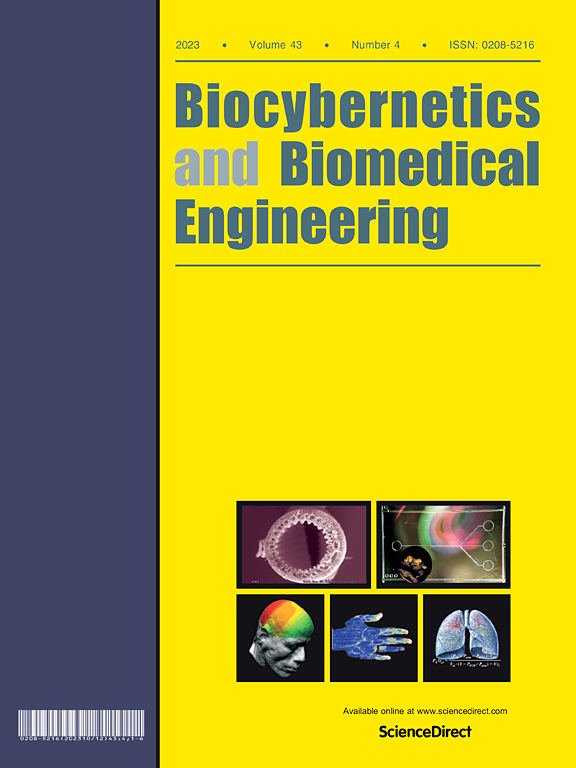基于脑电图(EEG)的心算分类,使用可解释的机器学习
IF 6.6
2区 医学
Q1 ENGINEERING, BIOMEDICAL
引用次数: 0
摘要
心算可以帮助评估由大脑非典型发育引起的神经发育障碍。我们提出了一种新的可解释的机器学习方法,用于将心算计算任务从静息大脑状态和好的计算从坏的计算中分类。从所有试验的平均信号的固有模态函数中提取经验模态分解特征。采用基于随机森林的递归特征消除方法对与心算任务相关的特征进行排序。这些特征首次在文献中识别出大脑节奏的频带变化,如delta, theta和alpha,在脑力任务中。这些独特的可解释的特征也被用来识别与心算任务有关的大脑区域,如额叶、颞叶和枕叶。此外,我们的方法描述了记忆区域,糟糕的计算会刺激大脑区域,这些区域主要与由于紧张的心算而导致的沮丧和焦虑等情绪有关。使用随机森林分类器,该方法在静态与计算、好与坏计算脑任务的分类准确率分别达到99.30%和98.33%。此外,我们的方法在处理学科间变异性方面也优于目前的技术水平,在静息与计算、好与坏计算任务的分类准确率分别达到98.17±0.47%和97.19±0.95%。本文章由计算机程序翻译,如有差异,请以英文原文为准。
Electroencephalograph (EEG) based classification of mental arithmetic using explainable machine learning
Mental arithmetic can be helpful for the evaluation of neurodevelopmental disorders arising from atypical development of the brain. We propose a novel explainable machine learning method for classifying mental arithmetic calculation tasks from resting brain states and good from bad calculations using Electroencephalography. Empirical mode decomposition features are extracted from intrinsic mode functions of the average signals of all trials. Most relevant features to the mental arithmetic tasks are ranked by a random forest-based recursive feature elimination method. These features identify the changes in frequency bands of the brain rhythms, such as delta, theta, and alpha, during mental tasks for the first time in literature. These unique explainable features are also used to identify brain areas such as frontal, temporal, and occipital lobes involved in mental arithmetic tasks. Moreover, our approach describes the memory regions and that bad calculations excite the brain areas, mostly related to emotions such as frustration and anxiety due to stressful mental arithmetic. Using a random forest classifier, beating the state-of-the-art, this method achieved classification accuracies of 99.30 % and 98.33 % for resting vs calculation and good vs bad calculation brain tasks, respectively. Also, our method outperformed the state of art in handling the inter-subject variability and achieved 98.17 ± 0.47 % and 97.19 ± 0.95 % classification accuracies for resting vs calculation and good vs bad calculation tasks, respectively.
求助全文
通过发布文献求助,成功后即可免费获取论文全文。
去求助
来源期刊

Biocybernetics and Biomedical Engineering
ENGINEERING, BIOMEDICAL-
CiteScore
16.50
自引率
6.20%
发文量
77
审稿时长
38 days
期刊介绍:
Biocybernetics and Biomedical Engineering is a quarterly journal, founded in 1981, devoted to publishing the results of original, innovative and creative research investigations in the field of Biocybernetics and biomedical engineering, which bridges mathematical, physical, chemical and engineering methods and technology to analyse physiological processes in living organisms as well as to develop methods, devices and systems used in biology and medicine, mainly in medical diagnosis, monitoring systems and therapy. The Journal''s mission is to advance scientific discovery into new or improved standards of care, and promotion a wide-ranging exchange between science and its application to humans.
 求助内容:
求助内容: 应助结果提醒方式:
应助结果提醒方式:


